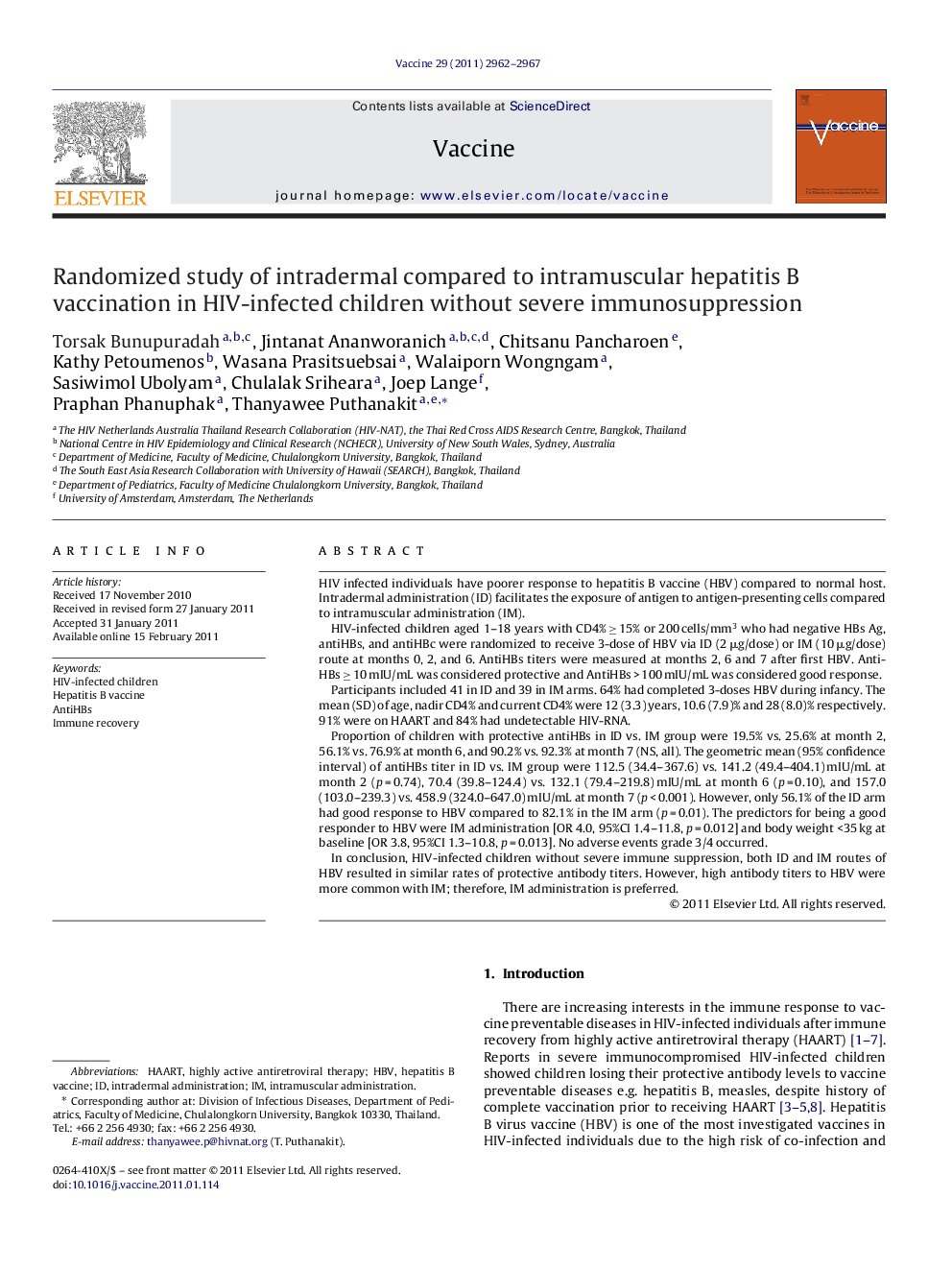| Article ID | Journal | Published Year | Pages | File Type |
|---|---|---|---|---|
| 2403415 | Vaccine | 2011 | 6 Pages |
HIV infected individuals have poorer response to hepatitis B vaccine (HBV) compared to normal host. Intradermal administration (ID) facilitates the exposure of antigen to antigen-presenting cells compared to intramuscular administration (IM).HIV-infected children aged 1–18 years with CD4% ≥ 15% or 200 cells/mm3 who had negative HBs Ag, antiHBs, and antiHBc were randomized to receive 3-dose of HBV via ID (2 μg/dose) or IM (10 μg/dose) route at months 0, 2, and 6. AntiHBs titers were measured at months 2, 6 and 7 after first HBV. AntiHBs ≥ 10 mIU/mL was considered protective and AntiHBs > 100 mIU/mL was considered good response.Participants included 41 in ID and 39 in IM arms. 64% had completed 3-doses HBV during infancy. The mean (SD) of age, nadir CD4% and current CD4% were 12 (3.3) years, 10.6 (7.9)% and 28 (8.0)% respectively. 91% were on HAART and 84% had undetectable HIV-RNA.Proportion of children with protective antiHBs in ID vs. IM group were 19.5% vs. 25.6% at month 2, 56.1% vs. 76.9% at month 6, and 90.2% vs. 92.3% at month 7 (NS, all). The geometric mean (95% confidence interval) of antiHBs titer in ID vs. IM group were 112.5 (34.4–367.6) vs. 141.2 (49.4–404.1) mIU/mL at month 2 (p = 0.74), 70.4 (39.8–124.4) vs. 132.1 (79.4–219.8) mIU/mL at month 6 (p = 0.10), and 157.0 (103.0–239.3) vs. 458.9 (324.0–647.0) mIU/mL at month 7 (p < 0.001). However, only 56.1% of the ID arm had good response to HBV compared to 82.1% in the IM arm (p = 0.01). The predictors for being a good responder to HBV were IM administration [OR 4.0, 95%CI 1.4–11.8, p = 0.012] and body weight <35 kg at baseline [OR 3.8, 95%CI 1.3–10.8, p = 0.013]. No adverse events grade 3/4 occurred.In conclusion, HIV-infected children without severe immune suppression, both ID and IM routes of HBV resulted in similar rates of protective antibody titers. However, high antibody titers to HBV were more common with IM; therefore, IM administration is preferred.
